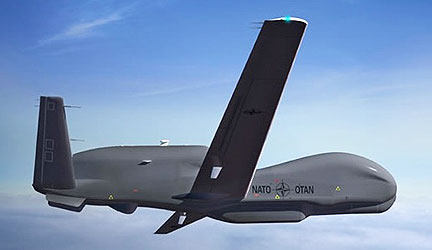
The Global Hawk drones require a ton of data storage on back-end servers, making the drones even more expensive to operate; however, NATO has a solution for that.
NATO will invest approximately $1.85 billion into boosting the Global Hawk's SATCOM capabilities, specifically to handle the data from its newest drone squad. The treaty alliance was slated to have all five of their US-made Global Hawk drones delivered by the end of 2017. The aircraft are likened to a "vacuum cleaner of data,", driving NATO to pursue more bandwidth space just to keep up — NATO expects to start hearing bids from defense companies internationally by the end of 2017.

The Global Hawk. Photo courtesy of Northrop Grumman.
The Global Hawk, along with its predecessor, the Predator, "were by far the most voracious consumers of military bandwidth," during Operation Enduring Freedom, which lasted from October 2001 until the end of 2014. That’s according Benjamin S. Lambeth’s book, Air Power Against Terror, which was based on a report that conducted by the Rand National Defense Research Institute for the US Central Command, wherein the author wrote that approximately 500 megabits of data per second were consumed by a single Global Hawk when the UAV was operating... and that was about 5x the total bandwidth that was consumed during Operation Desert Storm at its peak by the entire US military.
In addition to buying more bandwidth space, a NATO official confirmed that the bloc plans to spend another $1 billion on cybersecurity investments, air defense and missile defense infrastructure, this according to Politico-EU reports.

Article sourced from Sputnik International.

